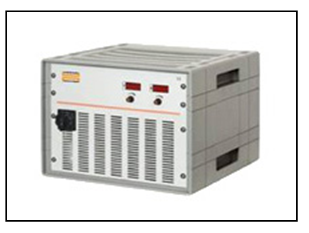AC-to-AC programmable power sources, also known as programmable AC power supplies or AC power sources, are versatile electronic instruments used in various testing, research, and development applications. These devices generate programmable alternating current (AC) waveforms, allowing users to simulate different voltage and frequency conditions to test the performance and behavior of electrical and electronic devices. Here are some key features and applications of AC-to-AC programmable power sources:
Features:
-
Programmability: AC-to-AC programmable power sources allow users to set and control various parameters, including voltage, frequency, phase, waveform shape (sine, square, triangle, etc.), and distortion levels. This programmability is crucial for simulating real-world operating conditions.
-
Wide Frequency Range: These power sources typically cover a wide frequency range, from low frequencies (e.g., 50 or 60 Hz) to high frequencies (up to several kHz or more). This versatility is valuable for testing a broad range of devices.
-
Amplitude Control: Users can set and adjust the output voltage amplitude to match specific test requirements, ensuring that devices under test (DUTs) operate within their specified voltage limits.
-
Phase Control: Some AC power sources provide phase control capabilities, enabling users to simulate phase shifts or synchronization requirements in their testing.
-
Harmonic Distortion: Programmable power sources often allow users to introduce controlled harmonic distortion into the output waveform, replicating non-ideal power conditions.
-
Transient Simulation: These instruments can simulate transient events such as voltage sags, surges, and interruptions, allowing the testing of DUTs under different power quality scenarios.
-
Digital Interfaces: Many AC power sources are equipped with digital interfaces, such as Ethernet, USB, or GPIB (General Purpose Interface Bus), to facilitate remote programming and integration into automated test systems.
-
Measurement and Monitoring: Some models include built-in measurement capabilities to monitor voltage, current, power factor, and other parameters during testing.
Applications:
-
Product Testing: AC-to-AC programmable power sources are commonly used in product development and manufacturing to test electrical and electronic equipment, including power supplies, inverters, motor drives, and appliances, under a wide range of AC voltage and frequency conditions.
-
Power Quality Testing: These instruments help assess the power quality of electrical systems by simulating voltage fluctuations, harmonic distortion, and other power disturbances to test the resilience of devices.
-
Aerospace and Defense: They are used in aerospace and defense industries to validate the performance of avionics, radar systems, navigation equipment, and military electronics under varying power conditions.
-
Renewable Energy Testing: In the renewable energy sector, AC power sources are employed to test and validate the performance of grid-tied inverters, wind turbine generators, and solar inverters.
-
Electrical Grid Simulation: AC power sources can simulate various grid conditions and disturbances to evaluate the behavior of grid-connected devices and protection systems.
-
Research and Development: Researchers use programmable AC power sources for experiments and investigations related to power electronics, electrical machines, and power systems.
-
Education and Training: AC power sources are valuable tools in educational institutions for teaching and training purposes, helping students understand power system concepts and testing techniques.
When selecting an AC-to-AC programmable power source, it’s essential to consider factors such as the required voltage and frequency range, waveform capabilities, programmability options, and connectivity features to ensure it meets the specific needs of your application or testing requirements.

